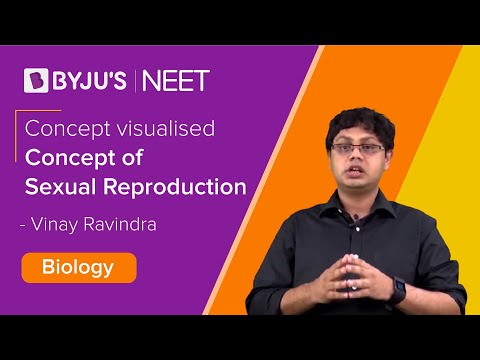Oestrus or Estrus cycle occurs in non-primate mammalian females. It is the cyclic changes occurring during the reproductive phase of an animal. It is controlled by various hormones. The Oestrus cycle starts at the onset of sexual maturity and stops during pregnancies. The frequency and duration of the cycle vary in different animals. It is similar to the menstrual cycle in humans and other primate females. It occurs in animals, such as dogs, cows, sheep, deers, horses, tigers, etc.
Download the Complete Guide to NEET UG Prep
Download Now
All females of placental mammals show these cyclic changes during the reproductive phase. During this, there are changes in the hormone levels, ovary, accessory ducts, etc., and they accompany ovulation.
Seasonal breeders exhibit these cycles only during favourable seasons of their reproductive phase, whereas continuous breeders repeat these cycles throughout the reproductive phase as they remain reproductively active throughout.
Phases of Oestrus Cycle
There are four phases of the oestrus cycle, and they are pro-oestrus, oestrus, metoestrus and dioestrus.
Pro-oestrus
It is the follicular phase where follicles start developing and secrete oestrogen. The uterus lining or endometrium starts to develop, and the vaginal epithelium proliferates.
Oestrus
It is also known as the period of heat. In this phase, the female is sexually receptive. Ovulation occurs in this phase. The female gets attracted to males and is ready for mating. It might be visible through various signs such as reddening of the labia.
Metoestrus
It is the luteal phase where the corpus luteum develops from the ruptured follicle after ovulation.
Dioestrus
The corpus luteum produces progesterone hormone, and it prepares the uterus for implantation. In the absence of pregnancy, the corpus luteum degenerates. Here, the uterus lining is not shed but reorganised for the next cycle.
Anoestrus
This is the resting phase or the phase of sexual inactivity. It is induced by pregnancy, lactation, illness, age and seasons or time of the year in seasonal breeders. In seasonal breeders, it is controlled through the exposure to light that influences the release of melatonin from pineal glands.
The duration and frequency of the cycle vary in different organisms. Smaller animals generally exhibit frequent cycles compared to larger animals.
- Monoestrous mammals such as bears, wolves, foxes, etc., show one annual cycle and have a well-defined breeding season.
- Polyoestrus mammals such as cows, pigs, etc., have many cycles and males remain sexually active throughout.
- Seasonal breeders may have more than one oestrus cycle in their breeding season.
- Short-day breeders are sexually active in winters, e.g. sheep, goats, deer, etc.
- Long-day breeders are sexually active in spring and summer, e.g. horses, hamsters, etc.
- Some mammals do not exhibit the oestrus cycle, e.g. rabbits. Ovulation is stimulated by mating; thus, they do not require a specific day to conceive and are able to conceive more frequently.
Differences between Oestrus and Menstrual Cycle
All mammals share a similar reproductive system and endocrine system for control, e.g. secretion of follicle-stimulating hormone (FSH) and luteinising hormone (LH) by the pituitary gland, secretion of oestrogens and progesterone by the ovary and secretion of gonadotropin-releasing hormone by the hypothalamus.
The Oestrus cycle is similar to the menstrual cycle in primates (monkeys, apes and humans), but there are marked differences. They are as follows:
|
|
|
|
It occurs in primates |
It occurs in non-primates |
|
The endometrium is shed in each cycle |
Endometrium is reabsorbed |
|
Females are sexually active throughout the cycle |
Females are sexually active during the oestrus phase of the cycle or termed as “in heat” |
|
Ovulation is concealed |
Many species show visible physiological and behavioural changes for sexual receptivity, such as mating calls, reddening of genitals, etc. |
This was all about the Oestrus Cycle. Explore notes on other important concepts related to NEET, only at BYJU’S.
Further reading:
- What Are Gametes?
- Difference Between Cleavage And Mitosis
- Difference Between Oviparous And Viviparous Animals
- Difference Between Parthenocarpy And Parthenogenesis
- Flashcards Of Biology For NEET Reproduction In Organisms
Recommended Video:
Reproduction in Organisms-Concept of Sexual Reproduction | NEET 2022

Comments